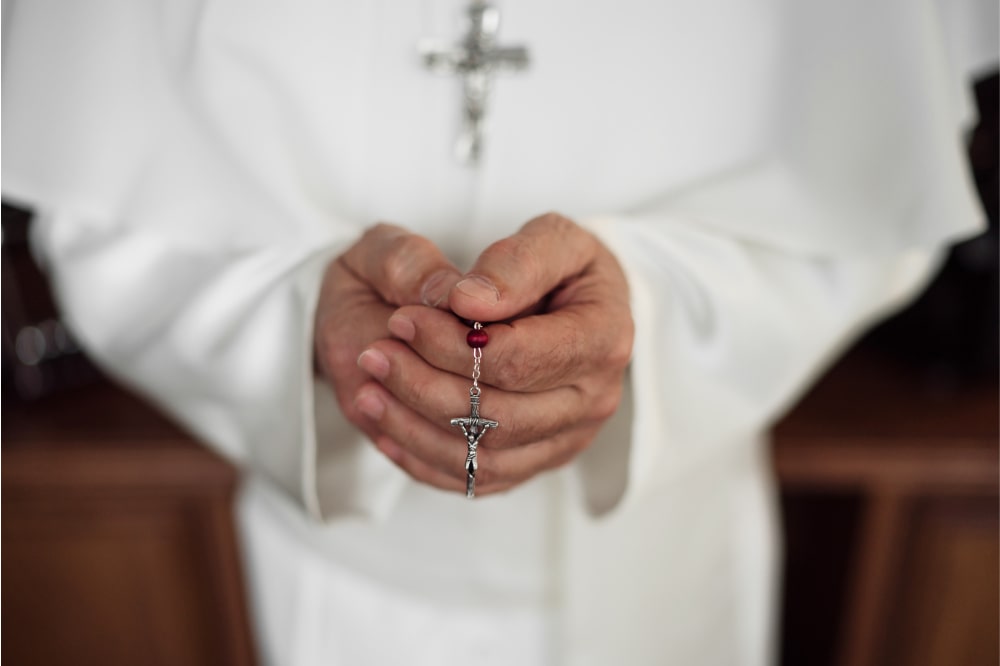The relics of the saints traverse the history of Christianity as testimonies of love, devotion, and faith.
Contents [hide]
- 1 Tooth of Saint Apollonia
- 2 Blood of Saint Januarius
- 3 Incorrupt Body of Saint Catherine
- 4 Holy House of Loreto of the Virgin Mary
- 5 Staff of Saint Joseph
- 6 Saint John the Baptist
- 7 30 Pieces of Silver of Judas Iscariot
- 8 Saint Anthony of Padua
- 9 Saint Agatha
- 10 The Veil of the Madonna and the Garment of Saint Joseph
They have always played an undeniable role in spreading the cult of men and women deemed blessed over the centuries. From the earliest Christian relics found in the catacombs to the many sacred remains and fragments brought from Jerusalem by Helena, mother of Emperor Constantine, relics and holy bodies have represented for Christian communities the hope of greater participation in grace and holiness through direct contact or at least the veneration of what had contact with a saint, or even more, was a part of them. Naturally, this conviction assumes even greater value if we speak of relics directly related to Jesus, such as the thorns of the Crown of Thorns, the Holy Nails, or the Shroud.

Jesus’ crown of thorns and its meanings
Jesus’ crown of thorns is one of the most emblematic symbols of the Passion. Let’s find out why and what has happened to it over the…
But what are saint relics? The word “relic” derives from the Latin “reliquiae” and means remains. Thus, a relic can first and foremost be the body of a saint, or more often a part of it, preserved in some way and fractionated over the centuries. It is not uncommon to find fragments of a single saint’s body in churches scattered around the world. In the case of Christian relics, the concept of holiness also extends to anything that had direct contact with the saint in question, from their clothes or jewelry to the instruments used for their martyrdom. Additionally, over time, the custom of venerating so-called contact relics has spread. These are objects that had no direct contact with the saint but did with one of their relics, and somehow absorbed part of the saint’s holiness. If we consider the Holy Nails, for example, there are about 33 considered authentic worldwide, 16 in Italy alone, along with an unspecified number of copies made using filings from the original nails, whose sacred power was transmitted by assimilation.
In this article, we do not wish to dwell on the most famous relics, such as the already mentioned symbols of Jesus’ Passion, but rather on the most curious and fascinating relics of the saints.

Easter: 10 curiosities about the symbols of the Passion of Christ
The symbols of the Passion of Christ are an integral part of the Solemnity of Christian Easter…
Tooth of Saint Apollonia
Saint Apollonia, celebrated on February 9, is the patron saint of dentists, dental hygienists, and dental technicians. She lived in the 3rd century AD and, according to various traditions, was either an elderly unmarried woman who was a friend of Christians in Alexandria, Egypt, and herself engaged in apostolic work, or a young girl, as she is usually depicted in sacred iconography. In this same iconography, she is shown with a pair of pincers in her hand because during her martyrdom, all her teeth were pulled out. In the Church of Saint Apollonia in Rome, one of these teeth is still kept clamped between the pincers that extracted it.

Blood of Saint Januarius
We have already dedicated a specific article to the blood of Saint Januarius, which liquefies three times a year. Contained in two ampoules kept in the Cathedral of Naples, it belongs to Saint Januarius, who died during Diocletian’s persecutions along with his friends and companions in faith. Each year, on the Saturday before the first Sunday of May, September 19, and December 16, the blood in the ampoules, which the Bishop shakes in front of the gathered faithful, miraculously returns to its liquid state. The miracle of Saint Januarius is one of the most famous and awaited in Italy, a reference point for thousands of devotees in Naples and beyond.

Incorrupt Body of Saint Catherine
Among the incorrupt bodies of saints, one of the most famous cases is that of Saint Catherine of Bologna, a nun belonging to the Poor Clares who died in 1463. Her intact body sits in the Church of Corpus Domini in Bologna, as if she had dozed off in a chair. The body was buried without a coffin, as was the custom of the Poor Clares, yet it has remained intact and is still visible today without any protection. Despite numerous attempts to find a scientific explanation for the phenomenon, it remains indefinable.
Holy House of Loreto of the Virgin Mary
The story of the Holy House of the Madonna of Loreto is the foundation of the cult of the Madonna of Loreto. It is also the heart of the famous sanctuary, where the Lauretane Litanies of the Holy Rosary originated. Indeed, the sanctuary is built around the Holy House! But what is it? According to legend, the Holy House is where Mary of Nazareth was born, lived, and received the visit of the Archangel Gabriel. At one point, while infidels were ravaging the Holy Land, Angels decided to save the house by flying it to safety, ultimately choosing this location. Due to this picturesque story, the Madonna of Loreto is considered the patroness of aviators and those who travel by air.

Staff of Saint Joseph
On the hill of San Potito in Naples, since 1795, the Archconfraternity of Saint Joseph of the Opera of Dressing the Naked has preserved the staff of Saint Joseph. Arriving in Naples over two centuries ago, the staff is enclosed in a cedarwood case. It is believed to be the famous staff Joseph carried when he went to ask for Mary’s hand in marriage. All suitors carried a similar staff, but Joseph’s miraculously blossomed. Lost for centuries, the staff was found in England and brought back to Italy by Giuseppe Grimaldi, known as Nicolino, a famous Italian castrato singer in that country.

Saint John the Baptist
We all know the story of John the Baptist, the forerunner of Jesus, who baptized Him in the Jordan and prepared the world for His coming. We know he died at the behest of Salome, daughter of Herodias, princess of Judea, who asked for his head on a platter in exchange for a dance. Different traditions exist about what happened to his head. The head of Saint John is kept in the Church of San Silvestro in Capite in Rome. The mandible is in the Cathedral of San Lorenzo in Viterbo. However, the Cathedral of Amiens claims possession of the original head, as does the Topkapi Palace in Istanbul. The platter that held the head is preserved in the Museum of the Treasure of the Cathedral of San Lorenzo in Genoa, along with part of the saint’s ashes. In the Siena Cathedral, there is one of his arms, a hand in Rapagnano, and the other hand in Montenegro. Many other places of worship hold fragments of bones, teeth, locks of hair, ashes, and even the blood of Saint John the Baptist. On the occasion of the beheading commemoration on August 29, these relics are displayed for the devotion of the faithful.
30 Pieces of Silver of Judas Iscariot
Judas, the apostle who betrayed Jesus with a kiss, condemning Him to death, is a well-known figure. However, little is known about what became of the 30 pieces of silver, the symbol of his betrayal—a paltry sum for the life of a man and friend, equivalent to about €3000 today! Before hanging himself, realizing what he had done, Judas returned the 30 pieces of silver to the Temple priests, who used them to buy the “Potter’s Field,” later called “Field of Blood,” in Aramaic Akeldama or Aceldama.

The true story of Judas Iscariot: known for betraying the Messiah
Judas’ name is linked to the sad story of the apostle who betrayed Jesus…
Saint Anthony of Padua
The relics of Saint Anthony of Padua, famous for his theological teachings and even more for his dedication to the poor and needy, are also spread across many different places of worship. Most of his remains are kept in the Chapel of the Ark in the Basilica dedicated to him in Padua. Devotees visit them daily, touching the marble of the altar where they are collected and praying to the saint for comfort and blessings. Other more delicate and particular relics of the saint are preserved in the chapel of relics: the tongue, which at the time of the transfer of the saint’s body to the new tomb was found still pink as if it were alive, the vocal cords, the chin, and a finger. Many other fragments and small parts of the saint’s body or objects belonging to him are in various churches in Italy and beyond. The friars of the Basilica of Padua organize an annual pilgrimage of the relics of Saint Anthony. Essentially, a friar from the basilica travels with a reliquary around Italy and the world, allowing the many distant devotees of Saint Anthony to worship him and feel closer to him.

Saint Agatha
In the cathedral of Catania, a large silver chest holds many relics of Saint Agatha, the city’s patron saint. A young Christian who died during the persecution of Decius, she endured a particularly brutal martyrdom, resisting until death, enduring every suffering to avoid renouncing her faith. Her relics had an adventurous history. Stolen by a Byzantine general who wanted to take them to Constantinople, they were partly recovered by two of his soldiers who returned them to the bishop of Catania. One of her breasts ended up in Gallipoli, while most of her remains were brought to the Cathedral of Catania, where they are still kept today in a precious silver bust and a large chest. Among them is also Saint Agatha’s veil, a veil that a woman would have laid on the burning coals to preserve the saint’s body from martyrdom.

The Veil of the Madonna and the Garment of Saint Joseph
For over 1600 years, two very particular relics have been preserved in the Basilica of Saint Anastasia on the Palatine Hill. They are the veil of the Madonna and a piece of Saint Joseph’s garment. It is said that Saint Jerome brought them to Rome after one of his apostolic trips to the Holy Land. Perhaps because they have been carefully guarded and rarely shown to the faithful, these relics have been very well preserved: the colours of the veil are still impressively vivid and bright.


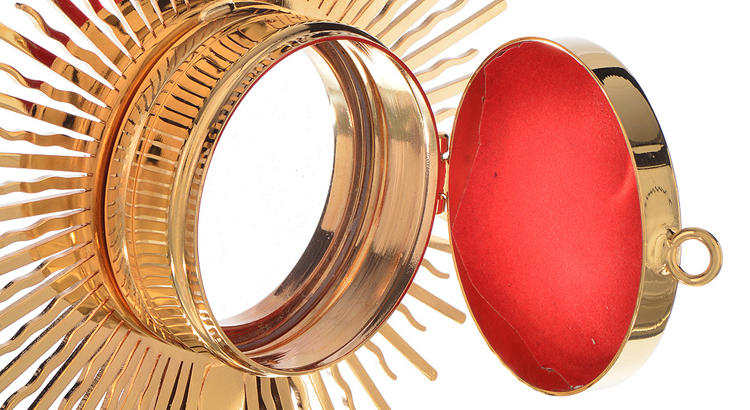
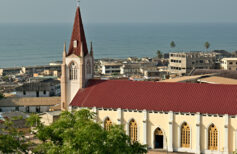



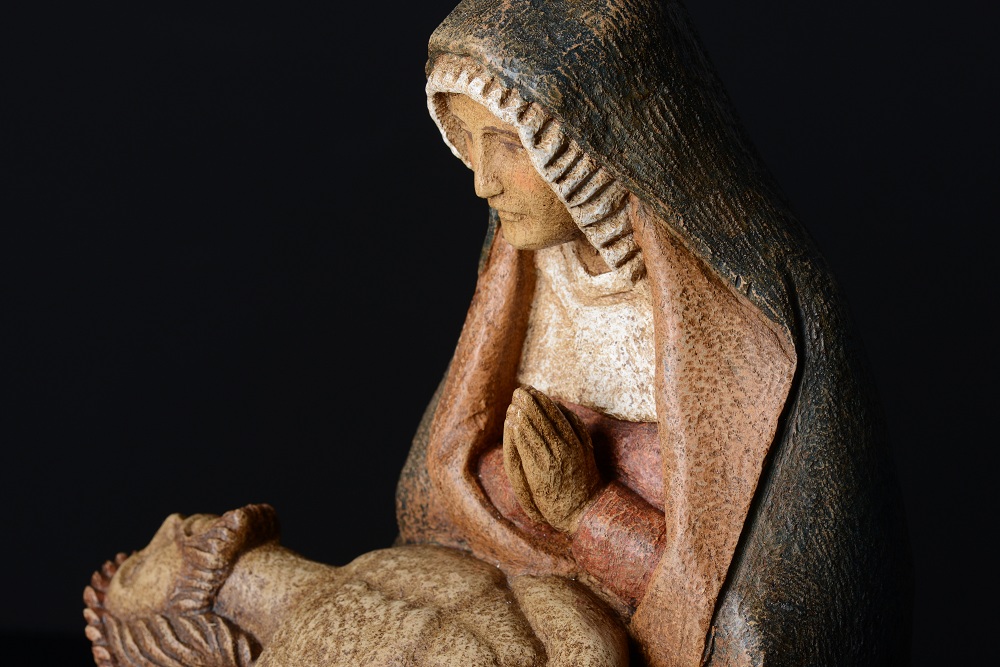
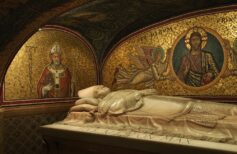
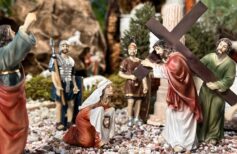
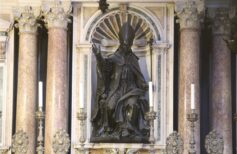








 19 March 2025
19 March 2025


